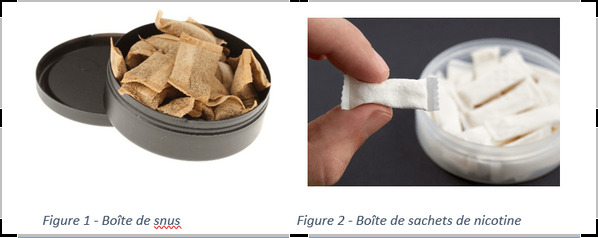Published on
Updated
Reading 2 mins.
In a press release, the National Committee against Smoking is alarmed by the growing popularity of nicotine sachets, mistakenly called “snus”, especially among adolescents, while legal uncertainty maintains confusion about these products and their toxicity. However, a sachet of tobacco contains between 7 and 20 times more nicotine than a cigarette.
After the vaporizer and the puff, the disposable electronic cigarette, here is a new product that appeals to teenagers looking for nicotine: the nicotine sachet, mistakenly called snus. Promoted recently by the media and social networks but also by athletes, these nicotine sachets are sold online and in certain tobacconists.
Sachet of nicotine or snus: confusion over the name, to attract the consumer
As the CNT recalls, snus consists of a sachet of moist sucking tobacco, sold in a wide range of flavors. But because of its many health risks, this product has been banned in France and the rest of the European Union since 1992. Nicotine sachets, on the other hand, do not contain tobacco, but a white nicotine-based powder with also a wide range of aromas.
In both cases, the sachet is placed between the gum and the lip. The confusion does not stop there: the products highlighted on social networks and at the heart of all the debates in the media are nicotine sachets. Except that they appeared in tobacconists under the misleading qualification of “Snus / snuf” in the last quarter of 2022 and on the internet about a year ago.

20 mg of nicotine per sachet, against 3 mg for a cigarette
However, even if they do not contain any tobacco, these nicotine sachets popular with adolescents are not without risk: each small sachet delivers a very large dose of nicotine, up to 20 mg according to certain brands of nicotine sachets against 1 3 mg for a classic cigarette.
This characteristic means a very rapid entry into addiction, especially among young people who are the main target of the marketing of this product. They therefore do not represent a less risky alternative to the consumption of tobacco products, especially since the presence of specific nitrosamines, some of which are carcinogenic (NNN, NNK), was found in a large part of the nicotine sachets tested. .
A legal void from which manufacturers take advantage in defiance of health
The CNCET recalls that these nicotine sachets are sold in France without prior declaration. Manufacturers are taking advantage of legal uncertainty around new nicotine products. Indeed, since May 2016, the presentation and sale of tobacco products and related products, the manufacturers of tobacco and vaping products have the obligation to declare certain information relating to the composition, emissions, toxicity or even the volume of sales of their products before marketing them to the National Food Safety Agency (ANSES). But these nicotine sachets are part of the new smokeless products, and thus escape this obligation for the moment.
Taking advantage of the legal vagueness that still surrounds smokeless nicotine products, manufacturers are using social networks to distribute advertisements and recruit influencers who encourage the consumption of these products. By presenting them as “snus” or “tobacco-free snus”, manufacturers deliberately maintain confusion with the aim of reversing the ban on the sale of snus in the countries of the European Union. A ploy which the sector takes full advantage of to maintain confusion between products that are more or less harmful to health, when this is not the case.
